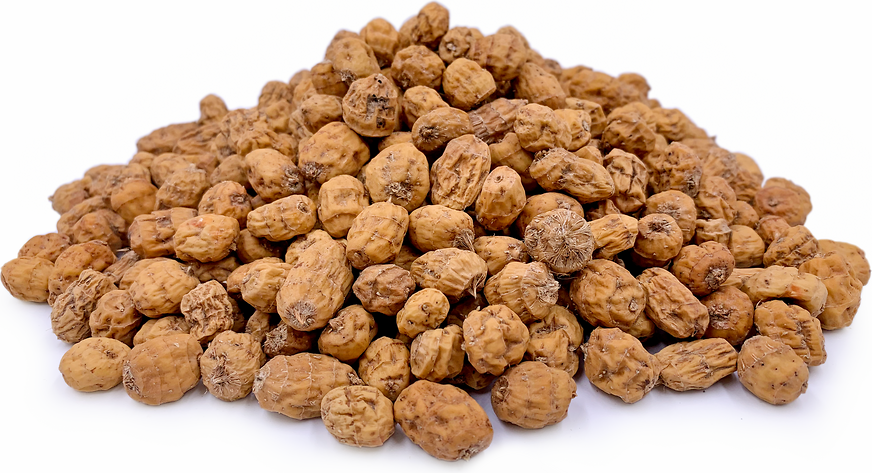


Tiger Nuts
Estimated Inventory, lb : 0
Description/Taste
The Tiger Nut plant has grass-like leaves which are 35-60cm long. Beneath the solitary stem grows a network of fibrous roots. From these roots are attached peanut-sized tubers or Tiger Nuts. Tiger Nuts are fibrous, nutty, somewhat juicy and slightly sweet.
Seasons/Availability
Tiger Nuts are planted in late spring, and harvested in the late fall. The dried tubers of the plant are available year-round.
Current Facts
Tiger Nuts grow from Cyperus esculentus, an herbaceous evergreen from the sedge family. A relative of papyrus C. esculentus is considered a weed in some parts of the world but an important food crop in many others. One plant can produce up to 2500 tubers or Tiger Nuts each.
Nutritional Value
Tiger Nuts are rich in starch, fat, sugar and protein. They are also high in vitamins E and C, as well as phosphorus and potassium. They are 20-36% oil; this oil is 18% saturated fat and 82% unsaturated fat, similar to the fat composition of olives.
Applications
Tiger Nuts can be consumed raw, roasted, dried, baked, juiced as a drink, or processed into oil. Both the Spanish and Nigerians use Tiger Nuts to make a sweet milky drink called horchata de chufa in Spain and kunnu aya in Nigeria. Flour is made from roasted, ground Tiger Nuts. Oil made from the fatty tubers has a rich, nutty taste and is compared favorably to olive oil, usable for both salads and frying. Industrial uses for Tiger Nuts include ingredients in soaps and as animal feed.
Ethnic/Cultural Info
In China, as well as Africa and in Ayurvedic medicine, Tiger Nuts are used to treat a wide variety of ailments. In Spain, horchata de chufa, a drink made of Tiger Nuts, is still used as a treatment for diarrhea. Tiger Nuts also boast a high level of antioxidants. It has been suggested that Paranthropus boisei, or the prehistoric “Nutcracker Man”, lived on Tiger Nuts. The tubers have been found in 6,000 year old Egyptian tombs and were an important crop for ancient Egyptians both as a food and as a medicine. Egyptians used them to make beer and sweets, were eaten roasted, and were used in many ways such as fumigations, ointments, and enemas.
Geography/History
Tiger Nuts are one of the oldest cultivated crops. 9,000-year-old prehistoric tools with traces of C. esculentus have been recovered suggesting this to be true. It is believed that they were an important energy source for prehistoric people. C. esculentus use has been recorded all over the world throughout history. It was brought to Spain by North African Arabs. It has been cultivated throughout the United States, Africa, the Middle East, South and Central America, Europe, and Asia. C. esculentus is pollinated by wind, is widespread in warmer climates, and grows in marshy or well irrigated areas. Once established, Cyperus esculentus is difficult to remove, as it has a stratified and layered root system.
Recipe Ideas
Recipes that include Tiger Nuts. One
| Simple Vegan Blog |
|
Spanish Horchata |
| Unconventional Baker |
|
Raw Tigernut Cheesecake |
| Nourished Kitchen |
|
Nigerian-style Tigernut Milk |




